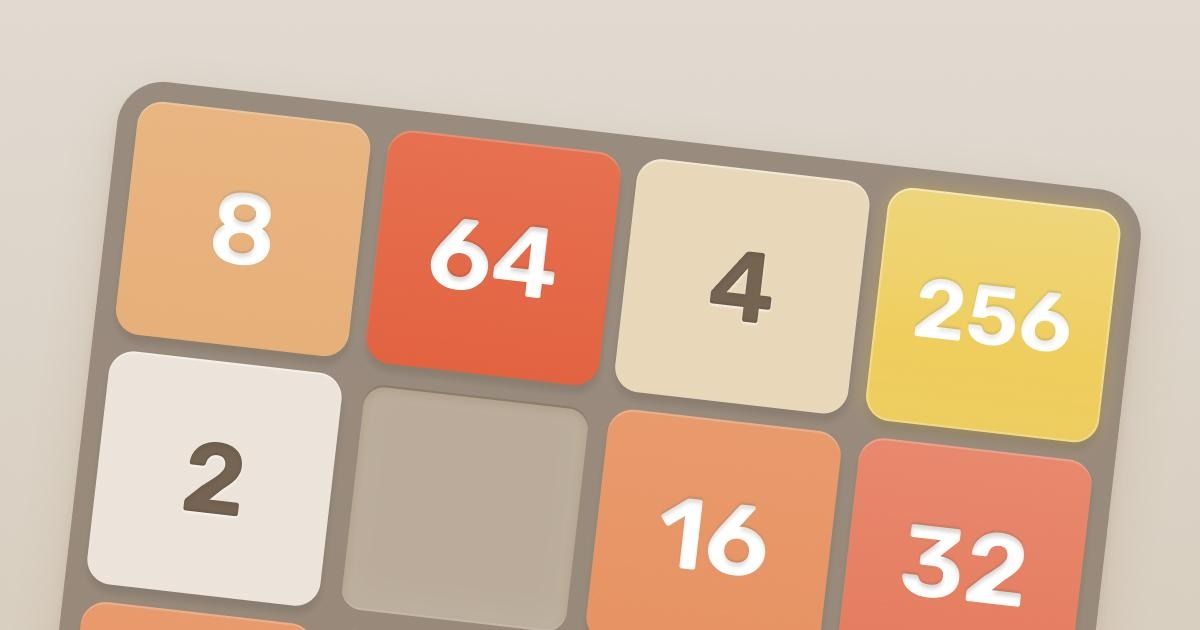

In the ever-expanding world of mobile gaming, casual games have become a phenomenon, captivating players of all ages with their simple yet addictive gameplay. Among these, the 2048 game stands out as a prime example of how a straightforward concept can evolve into a global sensation. This article delves into the world of casual gaming, with a special focus on the 2048 game, exploring its mechanics, popularity, and impact on the mobile gaming landscape.
Casual games have revolutionized the mobile gaming industry, offering quick, accessible entertainment for players on the go. These games are characterized by their simple rules, easy-to-learn mechanics, and short play sessions. The 2048 game epitomizes this casual gaming ethos, combining minimalist design with challenging gameplay that has captivated millions worldwide.
The 2048 game, first introduced in 2014, quickly became a viral hit. Its premise is deceptively simple: players slide numbered tiles on a 4×4 grid, merging tiles with the same value to create higher numbers. The ultimate goal is to reach the coveted 2048 tile. What sets the 2048 game apart is its perfect balance of accessibility and challenge, making it appealing to both casual players and puzzle enthusiasts.
The popularity of the 2048 game led to the creation of numerous variations and clones, further cementing its status in the casual gaming pantheon. Websites like 2048game.games have become go-to destinations for players seeking to experience the original 2048 game and its many iterations. These platforms offer a seamless, browser-based gaming experience, allowing players to enjoy the 2048 game without the need for downloads or installations.
Read more: Best Casual Games for iOS You Can Play Today
At its core, the 2048 game is a test of strategy and foresight. Players must carefully plan their moves to create higher-value tiles while managing the limited space on the grid. The game starts with two tiles, typically valued at 2 or 4, placed randomly on the grid. Players then use arrow keys or swipe gestures to move all tiles in one direction.
When two tiles with the same number collide during a move, they merge into a single tile with their combined value. For example, two 2 tiles will merge into a 4 tile, two 4 tiles into an 8, and so on. After each move, a new tile (again, usually a 2 or 4) appears in an empty space on the grid. The game continues until the player either reaches the 2048 tile or fills the grid with no possible moves left.
What makes the 2048 game so engaging is the constant decision-making process. Players must balance short-term gains with long-term strategy, deciding whether to focus on creating higher-value tiles or maintaining open spaces on the grid. This blend of tactical thinking and chance creates a compelling gameplay loop that keeps players coming back for “just one more game.”
While the rules of the 2048 game are simple, mastering it requires skill and strategy. Experienced players on 2048game.games often employ several advanced techniques to achieve high scores:
1. Corner Strategy: Many top players focus on keeping their highest-value tile in one corner of the grid, typically the bottom-right or top-left. This approach helps maintain order on the board and creates a clear direction for merging tiles.
2. Building Chains: Creating a descending sequence of tiles (e.g., 256, 128, 64, 32) along the edges of the grid can lead to big merges and high scores. This technique requires careful planning and tile management.
3. Maintaining Space: Keeping empty cells on the grid is crucial for long-term success. Players should aim to clear rows or columns whenever possible to create more room for maneuvering.
4. Anticipating New Tiles: Successful players learn to predict where new tiles will appear and plan their moves accordingly. This foresight can help prevent unwanted blockages and maintain control of the board.
The 2048 game’s influence extends far beyond the realm of mobile gaming. Its success has sparked discussions about game design, addiction, and the nature of viral content in the digital age. The game’s open-source nature led to countless variations, from themed versions featuring pop culture references to educational adaptations used in classrooms.
The popularity of the 2048 game on platforms like 2048game.games has also contributed to a broader trend of “brain training” games. While the cognitive benefits of such games are debated in scientific circles, there’s no denying their appeal to players looking to challenge themselves mentally while being entertained.
Moreover, the 2048 game has become a cultural touchstone, referenced in memes, social media posts, and even academic papers. Its simple yet addictive nature has made it a go-to example when discussing the psychology of game design and player engagement.
Despite being a single-player game, 2048 has fostered a vibrant community of players who share strategies, compete for high scores, and create content around the game. Websites like 2048game.games often feature leaderboards and social sharing options, allowing players to compete with friends and strangers alike.
This social element has been crucial to the longevity of the 2048 game and other casual games. Players return not just for the gameplay, but for the sense of community and competition. The ability to easily share scores and achievements on social media platforms has turned personal accomplishments into shared experiences, further fueling the game’s popularity.
As mobile gaming continues to evolve, the principles that made the 2048 game a success remain relevant. The demand for quick, engaging experiences that can be enjoyed in short bursts shows no signs of waning. Games that can capture the simplicity and addictiveness of 2048 while offering new twists on familiar mechanics are likely to find success in the crowded app marketplaces.
The 2048 game itself continues to adapt and evolve. New variations appear regularly on platforms like 2048game.games, offering fresh challenges to veteran players and newcomers alike. From 3D versions to multiplayer adaptations, the core concept of 2048 has proven remarkably flexible and enduring.
Furthermore, the success of the 2048 game has inspired developers to explore new ways of creating engaging puzzle games. The emphasis on minimalist design, intuitive controls, and progressively challenging gameplay has influenced countless titles in the casual gaming space.
An interesting development in the world of 2048 and similar puzzle games is the application of artificial intelligence and machine learning. Researchers and enthusiasts have created AI algorithms capable of playing 2048 at superhuman levels, offering insights into game strategy and decision-making processes.
These AI experiments not only push the boundaries of what’s possible in the 2048 game but also contribute to broader discussions about the potential of machine learning in gaming and beyond. As AI continues to advance, we may see new forms of casual games that adapt in real-time to player behavior, offering personalized challenges and learning experiences.
Read more: What Are Casual Games and Why People Love Them
The 2048 game represents more than just a fleeting mobile gaming trend. It embodies the core principles that make casual games so appealing: simplicity, challenge, and the ability to provide moments of joy and accomplishment in our busy lives. As platforms like 2048game.games continue to offer easy access to the game and its variations, new generations of players are discovering the addictive charm of sliding and merging tiles.
The success of 2048 also serves as a reminder of the power of good game design. In an industry often focused on cutting-edge graphics and complex narratives, 2048 proved that a well-executed concept could captivate millions with just numbers and a grid. Its influence can be seen in the countless puzzle games that have followed, each seeking to replicate the perfect balance of accessibility and depth that made 2048 a global phenomenon.